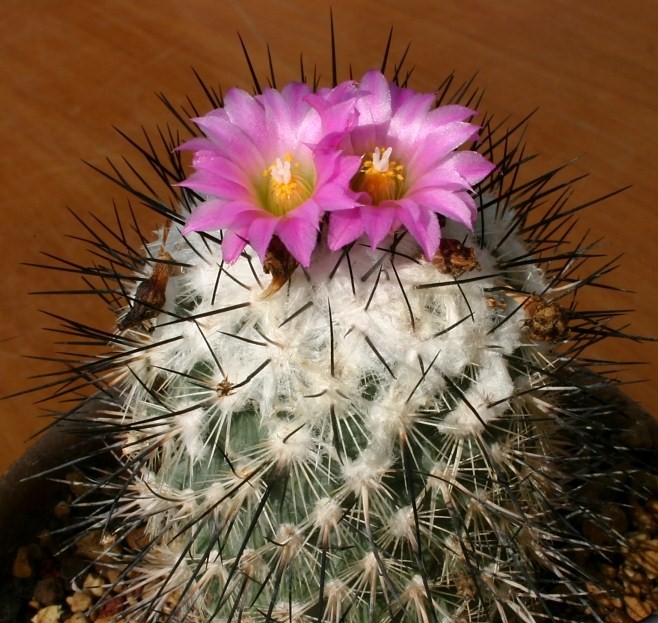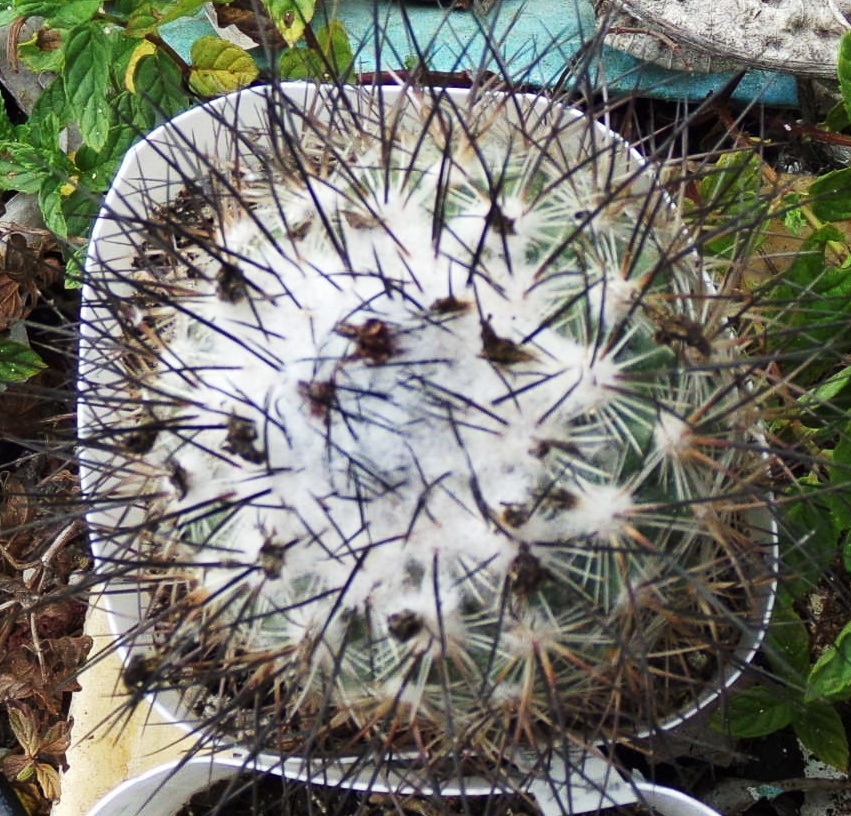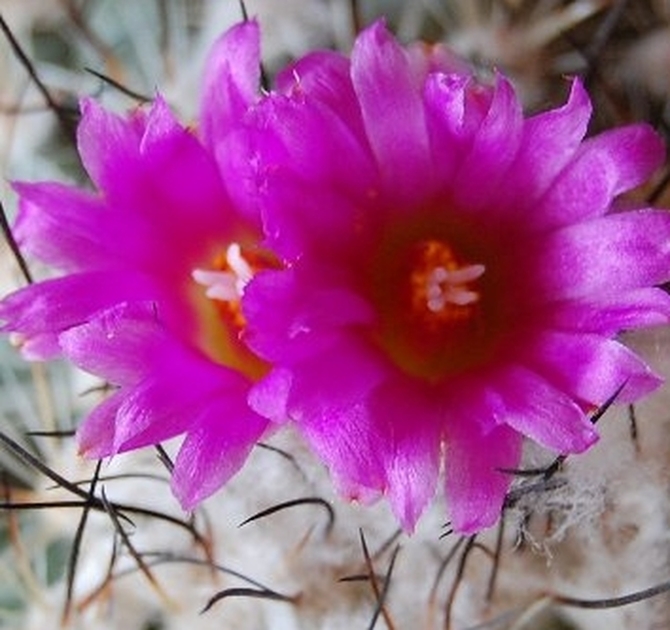
Turbinicarpus viereckii
Also Known As
- Echinocactus viereckii
- Gymnocactus aff. viereckii
- Gymnocactus viereckii
- Neolloydia viereckii
- Pediocactus viereckii
- Thelocactus viereckii
Like most Turbinicarpus species, this is a handsome cactus with beautiful spine patterns, it is recognizable without problems for the dark black spines and areoles with white wool

Scientific
name: Turbinicarpus viereckii (Werderm) V. John &
Place
Origin:
Mexico (Tamau Lipas) Tamaulipas
area of Mexico and found at an
altitude of around
Conservation status: Listed in CITES appendix I
Habitat: this species is found at an altitude of 750-850m of altitude, they live in cracks in rocks, on cliff faces, so they get very little nutrients, and grow nearly free of organic matter. The only naturally occurring organic matter will be leaves blown around and getting caught on the spines.
Synonyms: Gymnocactus viereckii (Werderm.) Backeb. Thelocactus viereckii (Werderm.) Bravovar. Neolloydia viereckii (Werderm.) F. M. Knuth; Pediocactus viereckii
Description: Like
most Turbinicarpus species, this is a handsome cactus with beautiful spine
patterns, it is recognizable without problems for the dark black spines and
areoles with white wool (when young), soon becoming bare
Growing solitary or occasionally clustering they live in cracks in rocks, on cliff faces, getting very little nutrients, and growing nearly free of organic matter. The only naturally occurring organic matter will be leaves blown around and getting caught on the spines. G. viereckii will grow to about 7" in height and 3" in width, it's a small plant but the flowers are a bright magenta or pink with a greenish-white throat making up for the size.Other names that have been given this variety is Thelocactus viereckii, Pediocactus viereckii, Neolloydia viereckii, and Echinocactus viereckii.
Stem:. Dull green, globular to slightly cylindrical 3-5 (-12cm) tall, 3-5(-7) cm in diameter apex with abundant white wool.
Roots: Swollen bundled.
Ribs: 15 to 18 ribs divided in tubercles.
Radial spines: 17
to 22 rigid white translucent, some with brown tips, 0.8-
Central spine(s):
3 to 5 white with black
tips in a cross like formation, 2-
Flowers: Bright
magenta or pink with greenish-white throat and darker mid-ribs, 1.5-
Fruit:. Greenish-brown.
Frost Tolerance: Hardy to
Minimum Temperature:
Watering Needs: Water sparingly during the growing season as they are sensitive to over watering.
Cultivation: This
species is easy to cultivate in a very open mineral mix, (lots of pumice).
Requires full sun or Light shade and careful watering to keep plant compact and
maintain strong spines. Water sparingly during the growing season as they are
sensitive to over watering. Keep dry in winter. Hardy to
Bibliography: Anderson, E. F. 1986. A revision of the genus Neolloydia. Bradleya 4:15. [= Neolloydia viereckii (Werderm.) F. M. Knuth].
Anderson, E. F. 2001. The cactus family. (Cact Fam)
Bravo-Hollis, H. & H. Sánchez-Mejorada. Las Cactáceas de México, vol. 1 - 1978, vols. 2,3 - 1991 (Cact Mex) [= Thelocactus viereckii (Werderm.) Bravo].
Hunt, D. 1992. CITES Cactaceae checklist. (CITES Cact L)
Turbinicarpus viereckii is a handsome cactus with beautiful spine patterns Buy Cacti for Sale Best Prices Buy exotic cactus plants for sale Buy high quality indoor cactus plants, We have desert cactuses, cacti for landscaping
Turbinicarpus viereckii is a rarity My rare Cactus Plant Buy cactus Oceanside,CA
Turbinicarpus viereckii is a rarity and handsome cactus with beautiful spine patterns Buy Cacti for Sale Best Prices Buy exotic and Rare cactus plants for sale Buy high quality indoor cactus plants, desert cactuses
Turbinicarpus viereckii is a rarity 2 years old seedlings Ø2.5-3 cm for $5.50
I used seeds for these seedlings taken from their origin - Tamaulipas area of Mexico and found at an altitude of around
The less price is on password protection page: "New offers". You can get login information by sending email to mikglad@cox.net with Subject: 'New Offer'
Ø
Turbines viereckii Ø5 cm for $6.95

This sample was boomed from May to July. It is an attractive dwarf cactus covered with characteristic glassy white and black spines and whitish wool
